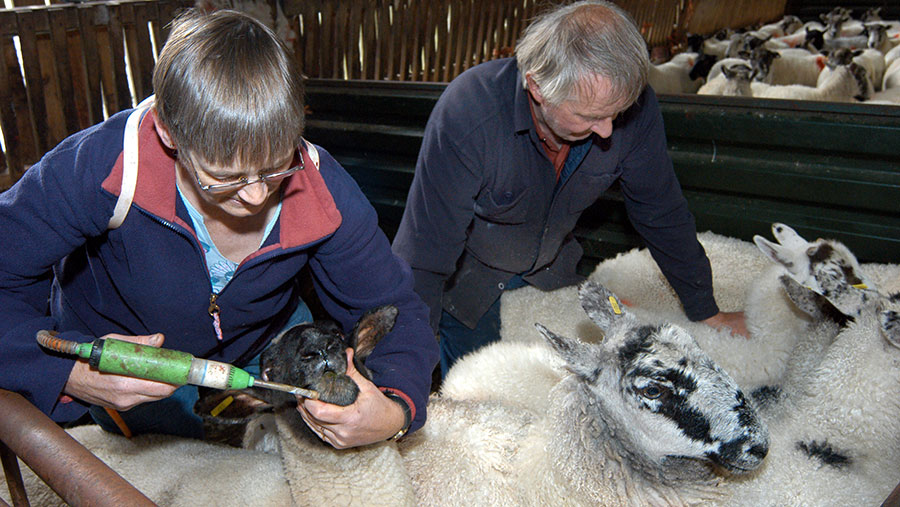Parasite warnings issued for flocks after wet summer
 © Photofusion/Shutterstock
© Photofusion/Shutterstock Faecal egg counts and regular flock inspections could be critical after a wet summer which has provided ideal conditions for parasites to thrive, sheep farmers are being warned.
National parasite monitoring initiatives show the risk of blowfly strike and gastrointestinal parasites is high.
Faecal Egg Count (FEC) tests have returned medium and high counts across the country in the Zoetis parasite watch scheme.
And fortnightly blowfly reports by the National Animal Disease Information Service (Nadis) have indicated very high risk in Northern Ireland, England and Wales this summer, and high risk in Scotland.
See also: Sheep farmer sees four clear benefits of plunge-dipping
Blowfly strike
Much of the UK has been classed as at “very high” risk of Blowfly strike since mid-August, according to fortnightly Nadis updates.
Farmers are being reminded that soiled back ends form parasitic gastroenteritis (PGE), and foot rot lesions are common sites for blowfly strike.
Steps to take against blowfly strike
- Inspect stock daily
- Check the fortnightly updates on the Nadis Blowfly update alerts.nadis.org.uk
- Dagging, crutching and shearing in a timely manner can reduce risk
- Good parasite control can reduce instances of soiled fleece
- Chemical applications/treatments can prevent and treat blowfly strike. Insect growth regulators, organophosphate and synthetic pyrethroids are the options to discuss with your vet
Parasitic gastroenteritis
Warm and wet weather conditions have provided perfect breeding conditions for worms too, and farmers are advised to speak with their vet and look at FEC testing where possible.
A relatively cool July may have helped larvae survive later into the season than usual and the warm and wet conditions later will have favoured larval development and dispersal, says Nadis.
Steps to take against PGE
- Monitor stock for signs of disease (weight loss, mucky back ends)
- Monitor weight gain or worm egg counts to implement a targeted selective treatment plan
- Keep monitoring lambs every two-to-four weeks. Generally, only 40-60% of lambs should need treatment based on sufficient weight gain and at least 10% of the flock should be left untreated if possible, to reduce selection for anthelmintic resistance
- FECs should be randomly taken from 10-12 lambs per group. Treatment might be required if egg counts are greater than 500-700 eggs per gram
- Once dosed, leave animals on dirty pasture for two-to-three days
- Avoid dosing with long-acting group three macrocyclic lactone products
- Check drench efficacy 7-14 days post-treatment, depending on product (which have different timescales), to assess whether it has worked
Fertility threat
“Treatment choices will depend on the burden and it is important you speak with your vet or Registered Animal Medicines Adviser,” says Dr Ami Sawran, Westpoint Farm Vets.
She points out worms can affect fertility and conception rates, with rams often being susceptible as they typically have less exposure to parasites.
“The sperm cycle takes 7-8 weeks, so you have got to be thinking about the health of that animal two months before they are being mated,” says Dr Sawran.
“If you have a significant worm burden at any point in the sperm cycle you will end up with sub-optimal fertility.”
She says that ewes’ ability to get pregnant is also affected by worms if they are not in optimal body condition because the animal focuses more on staying alive than conception or maintaining a pregnancy.
“If you can get on top of worms now you can then focus on getting ewes in the correct body condition before breeding,” she concludes.
